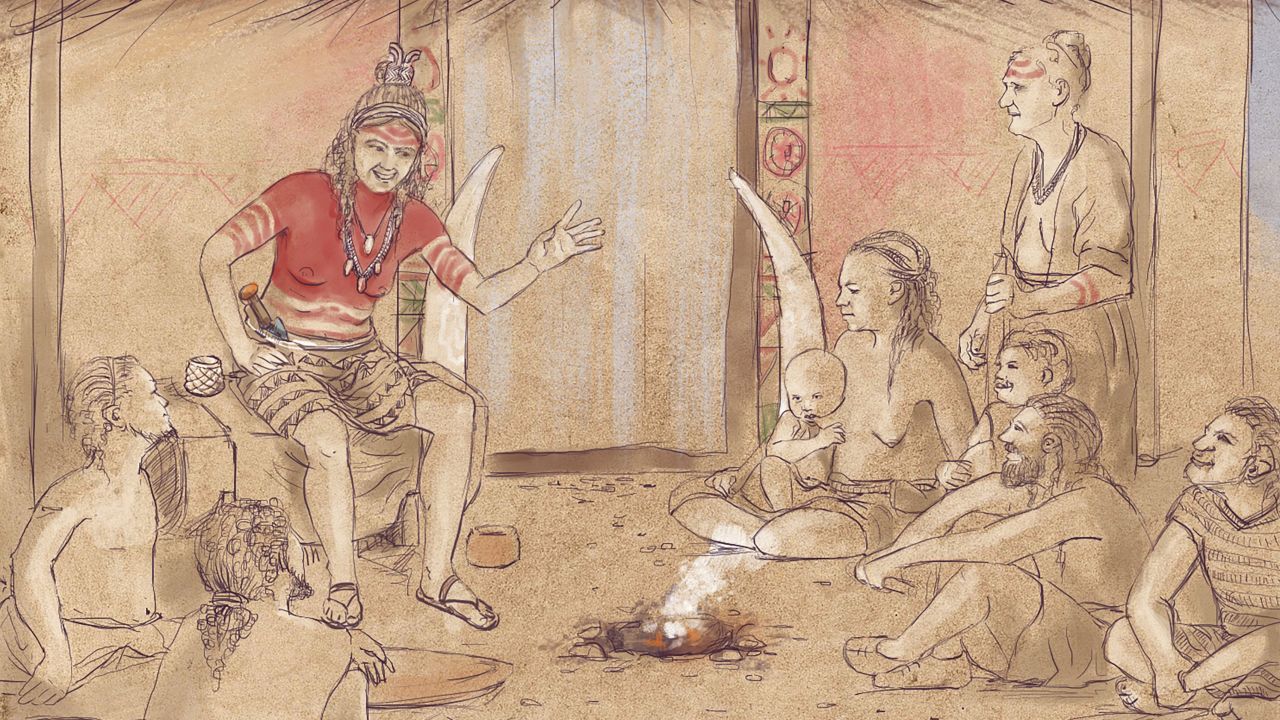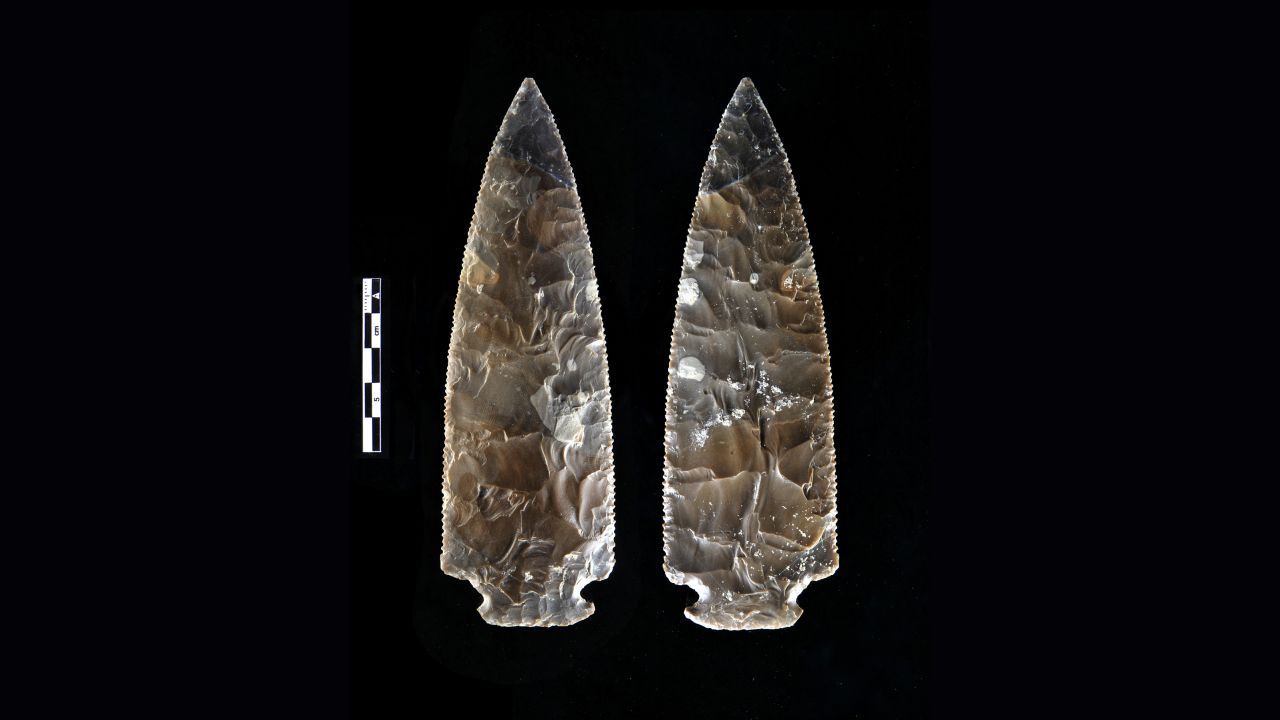Buried with an elephant’s tusk, an ivory comb, a crystal dagger, an ostrich eggshell and a flint dagger inlaid with amber, the skeleton discovered in a tomb near Seville, Spain, in 2008 was clearly once someone important.
Based on analysis of the pelvis bone, a specialist initially identified the 5,000-year-old skeleton as a “probable young male” who died between age 17 and 25. A team of European archaeologists dubbed the remains the “Ivory Man,” and began researching what they called a “spectacular” find.
More than a decade later, the researchers used a new molecular method in 2021 to confirm the skeleton’s sex as part of a broader study on the discovery, and they got quite a shock. It turned out that the “Ivory Man” was in fact female.
“We didn’t not expect it would turn out to be a woman. And this came as a surprise. So, this actually forced us to rethink everything about this site,” said study author Leonardo García Sanjuán, a professor of prehistory at the University of Seville.
What they learned about the woman and the society she lived in opens a new window on the past and will likely force many to reconsider traditionally held views about prehistory.
“In the past, it was not uncommon for an archaeologist to find (remains) and say, ‘OK, this individual has a sword and a shield. Therefore, he’s a man.’ Of course, deeply mistaken, because it assumes that in the past gender roles were the way we conceive them today,” García Sanjuán said.
“This technique, we think, is going to open up an entirely new era in the analysis of the social organization of prehistoric societies.”

New method to determine sex of skeletons
The newer method to determine the sex of old bones — first used in 2017 — involves analyzing tooth enamel, which contains a type of protein with a sex-specific peptide called amelogenin that can be identified in a lab.
Analysis of a molar and an incisor from the skeleton detected the presence of the AMELX gene — which produces amelogenin and is located on the X chromosome — indicating that the remains were female rather than male, according to the study.
In other studies, the technique has also been used to dispel the cliché of “man the hunter” that has informed much thinking about early humans.
The typical way archaeologists tell the sex of a skeleton is by looking at the pelvis: Women’s pelvises generally have wider openings than men’s do. The problem is that hip bones — compared with some other parts, such as skulls — are thin, which means they turn brittle over time and are easily crushed. That’s why it’s easy to make mistakes when looking at a pelvic opening to determine biological sex, as in the case of the “Ivory Lady.”

Ancient DNA can also reveal the sex of human remains, but it’s fragile, easily contaminated, expensive and often not possible to retrieve from damaged bones, particularly in warmer places. Amelogenin, however, preserves well, meaning it could be widely used to figure out the sex of even incomplete skeletons.
“It’s being used more and more now. It’s exploding a little bit, which is exciting,” said bioarchaeologist Rebecca Gowland, a professor at the University of Durham, who was part of a team that first developed the method involving tooth enamel.
“We are testing the limits… and seeing how far back in time we can go,” said Gowland, who was not involved in this latest study.
What’s more, she added, the method can be applied to both adult and childhood teeth and is particularly useful for the latter. That’s because it’s impossible to tell the sex of children’s skeletons until they go through puberty.
The ‘Ivory Lady’ was a revered leader
The authors of the new study, which was published in the journal Scientific Reports on Thursday, believe that the Ivory Lady held a high rank and was revered by the society in which she lived for at least eight generations after her death. The graves of dozens of people and other features that encircle her tomb span 200 years after her death, according to radiocarbon dating.
The grave goods — including items she was buried with and some, such as the crystal dagger, that were added later — are the most valuable of those found at more than 2,000 known prehistoric graves discovered in Spain and Portugal. No male tomb of a similar status has been found from that era in the region.

The region’s only comparably lavish tomb, containing at least 15 women, was found about 100 meters (328 feet) away from the grave of the Ivory Lady and is presumed to have been built by people who claimed descent from her. This suggests that women occupied positions of leadership in Iberian Copper Age society, at a time when a more hierarchical society was beginning to emerge in Europe, according to the research.
The study authors say it’s unlikely her high status was a birthright because there are no infant burials in the region that contain grave goods. They believe the Ivory Lady achieved her status through her own merit.
“She must have been highly charismatic person. She probably traveled or did have connections with people from faraway lands,” García Sanjuán said.
Her other source of influence could have been esoteric or magical, he added. She had high levels of mercury in her bones, which could have come from burning or using cinnabar — a substance that has an intoxicating effect.
“There is not a single burial (in the region) that remotely compares to the Ivory woman in terms of the wealth she was buried with. Not women, not men,” García Sanjuán said.

While the skeleton’s biological sex is not in dispute, Gowland cautioned that nothing is known about the Ivory Lady’s gender identity, and scholars shouldn’t impose modern gender norms onto past populations.
“It could be that they had some special status that was more significant than their gender identity or … there was not a binary gender system,” she noted.
Pamela Geller, an associate professor and bioarchaeologist at the University of Miami, agreed.
“I think this study of the Ivory Lady confirms what feminist-inclined bioarchaeologists have been saying for almost two decades now…that past socio-sexual lives were diverse and complex,” said Geller, who was not part of the latest study.




